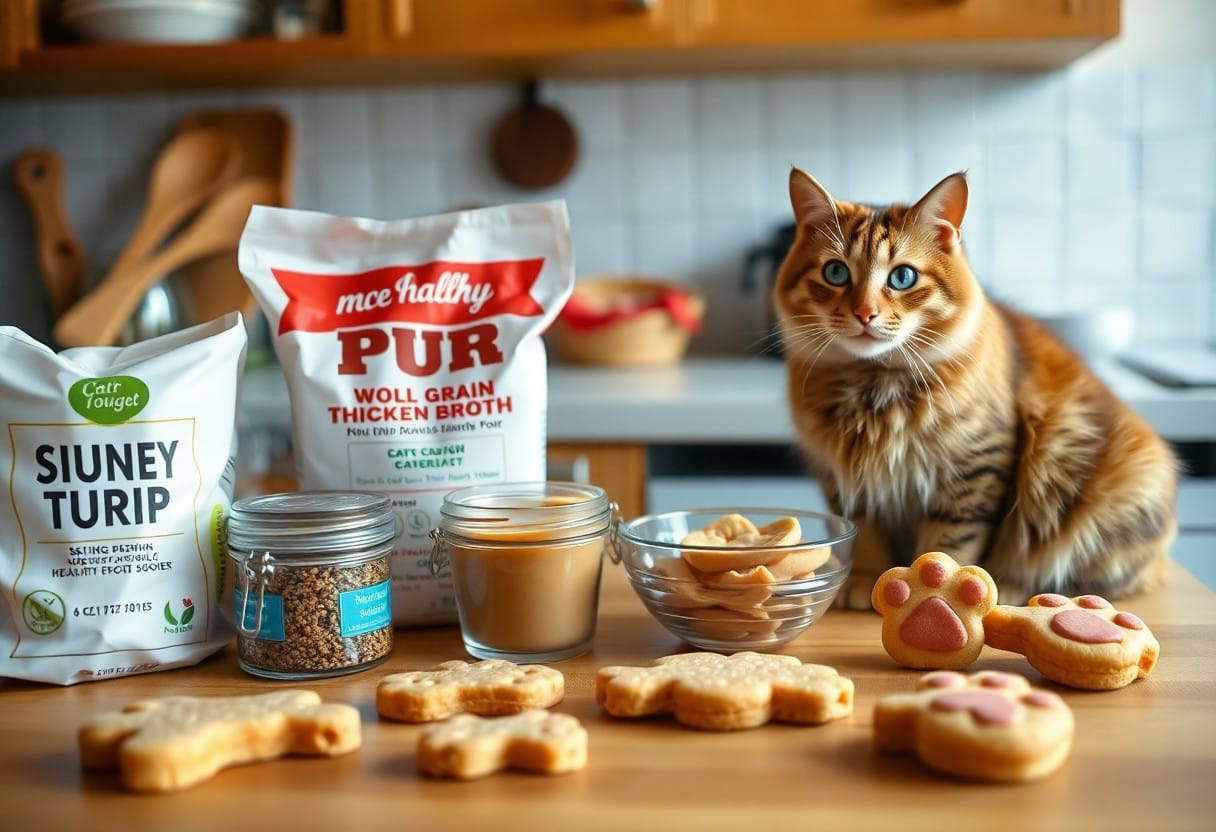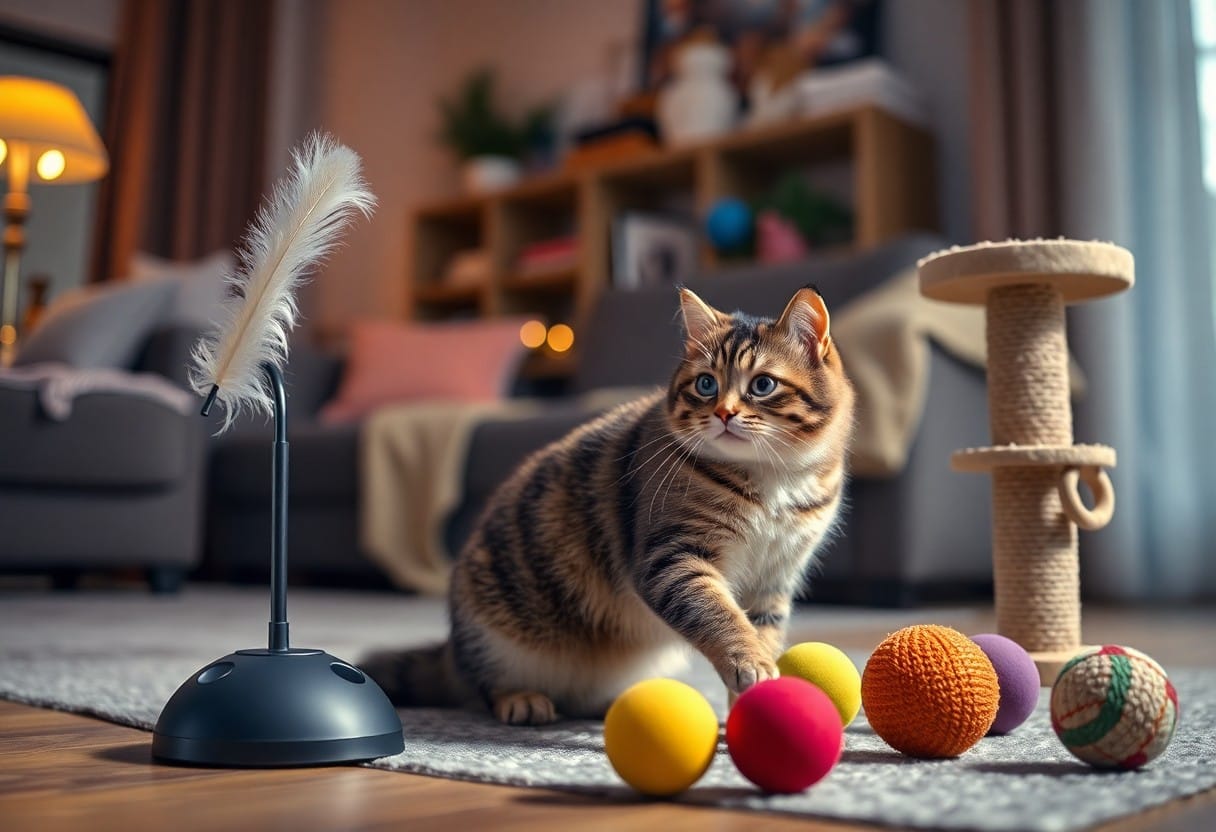You can delight your feline friend while ensuring they eat healthily by making your own cat treats. In this guide, you’ll discover nutrient-rich ingredients that promote their overall well-being, along with simple recipes that are easy to follow at home. Avoid harmful additives and unhealthy store-bought options by learning what natural ingredients are beneficial for your cat’s diet. Get ready to whip up some tasty and healthy snacks that your pet will love, all while fostering a bond through homemade love!
Key Takeaways:
- Homemade cat treats can be nutritious and tailored to your cat’s preferences, enhancing their overall health and well-being.
- Utilizing natural ingredients like meat, fish, and vegetables ensures treats are free from harmful additives, providing a safer alternative to commercial options.
- Simple recipes often require minimal preparation, making it easy for cat owners to create delicious and healthy snacks for their pets at home.
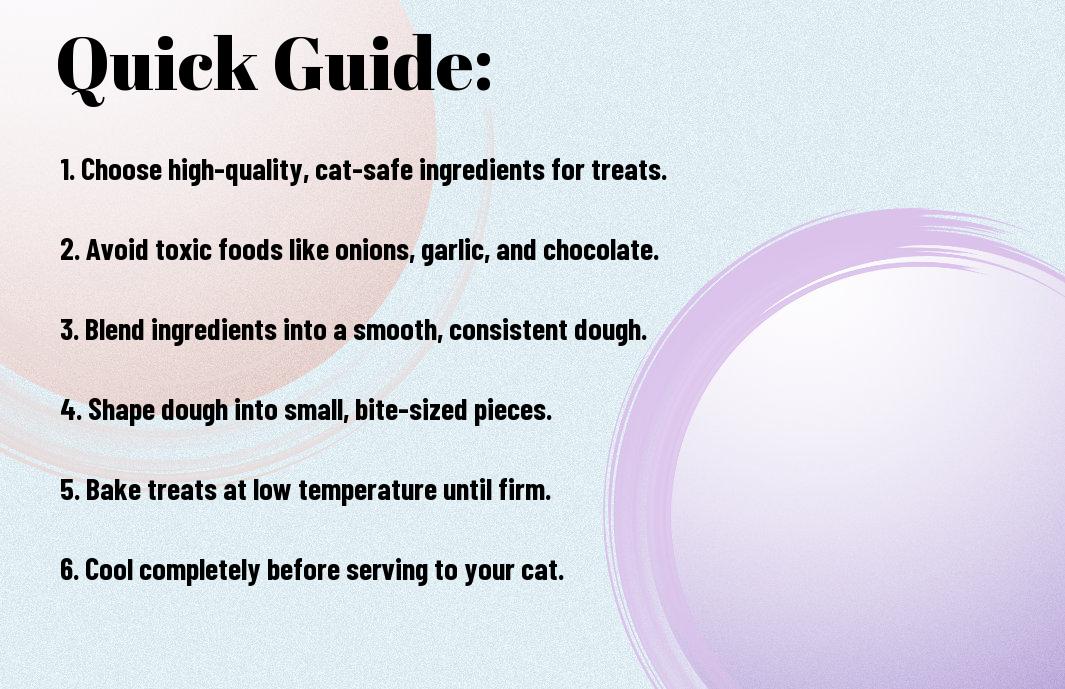
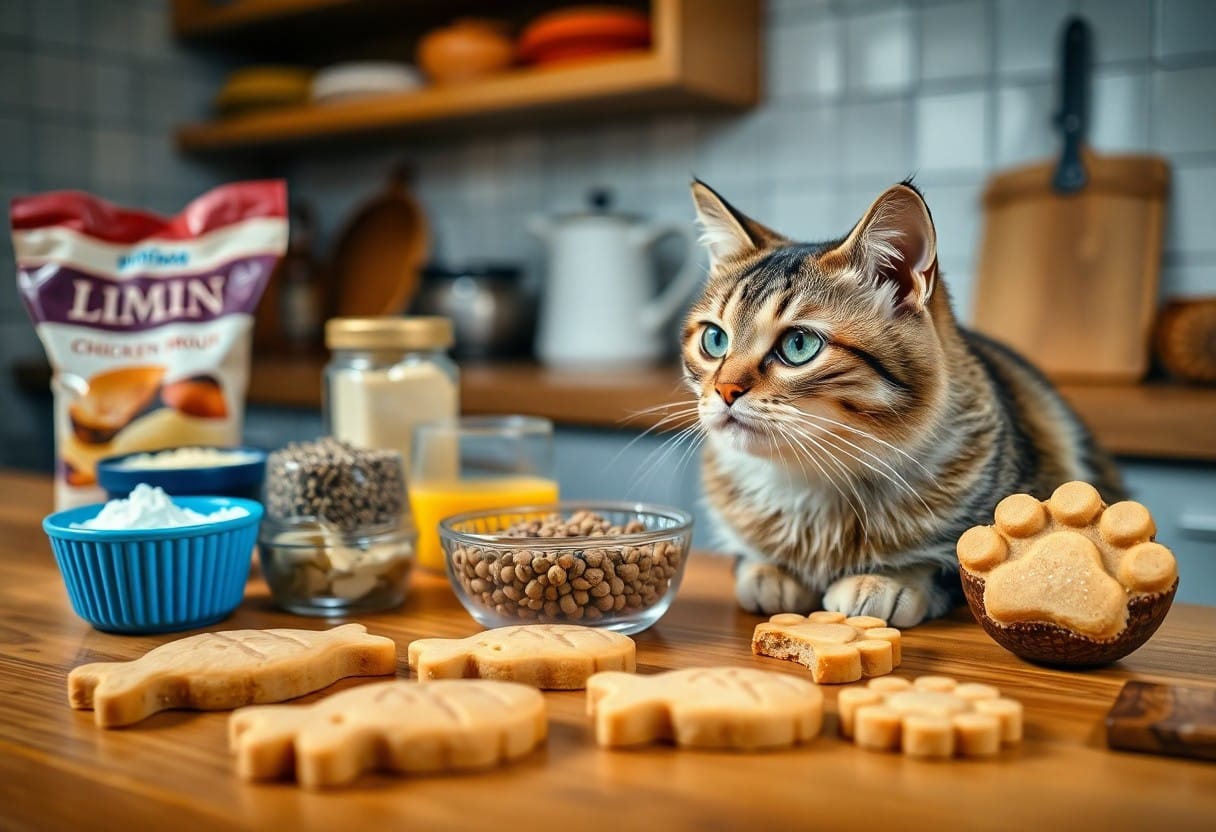
Types of Healthy Cat Treats
The variety of healthy cat treats you can make at home is extensive. Some common types include:
| Meat-based Treats | High in protein, these can include chicken, turkey, or fish. |
| Vegetable Treats | Use cat-friendly veggies like pumpkin or carrots. |
| Grain-free Treats | Utilize ingredients like almond or coconut flour. |
| Freeze-dried Treats | Preserve nutrients while providing crunchy snacks. |
| Dental Treats | Promote oral health with ingredients designed to scrape teeth. |
Perceiving the different types of healthy cat treats can help you choose the best options for your feline companion.
Homemade Treats vs. Store-Bought
Assuming you’re weighing the benefits of homemade versus store-bought treats, it’s important to note that homemade treats often contain fewer preservatives and additives, allowing for more control over your cat’s diet. With homemade options, you can ensure only high-quality ingredients are used.
Ingredient Varieties
Healthy treats can incorporate a wide range of ingredients, offering something special for your cat’s preferences.
For instance, you can experiment with proteins like chicken or salmon, healthy fats from olive oil, and even nutritious additions of spinach or carrots. It’s vital to avoid harmful ingredients such as onions or garlic, while focusing on wholesome options that provide nutritional benefits. This gives you the chance to cater to your cat’s tastes while ensuring their health and happiness.
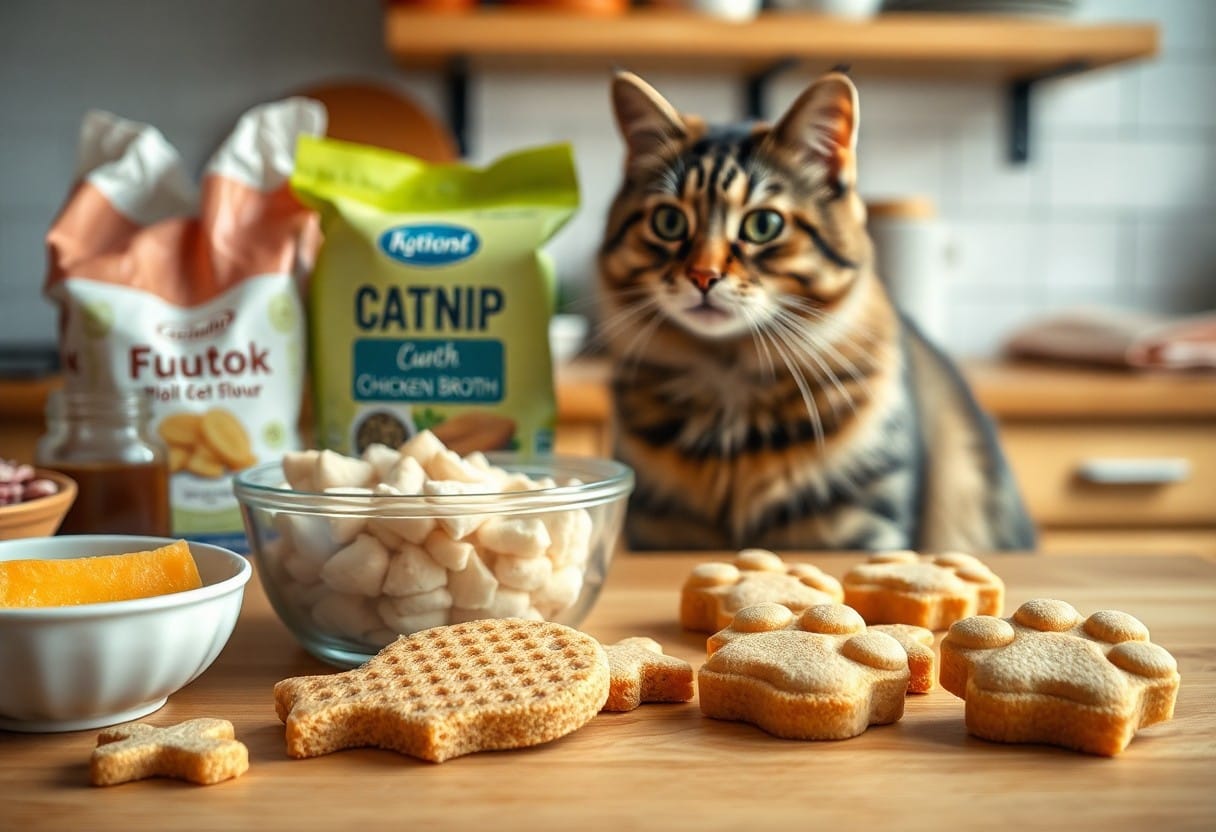
Tips for Choosing Ingredients
Any time you’re selecting ingredients for your homemade cat treats, focus on quality and nutrition. Consider these key points:
- Opt for whole, natural ingredients.
- Check for high protein content.
- Avoid fillers like corn and wheat.
- Incorporate healthy fats from sources like fish oil.
- Consult your veterinarian for tailored ingredient choices.
Assume that prioritizing your cat’s health will lead to happier, healthier treat-making.
Nutritional Value
To ensure your feline friend thrives, it’s important to prioritize the nutritional value of the ingredients you use in homemade treats. Look for options that offer high-quality proteins from chicken, turkey, or fish, as well as fiber from vegetables like pumpkin or spinach. Adding imperative vitamins and minerals will support overall health and can help prevent specific dietary deficiencies.
Allergies and Sensitivities
Clearly, some cats have specific allergies or sensitivity to certain foods, which can lead to major health issues. It’s imperative to pay attention to any signs of discomfort or allergic reactions when introducing new treats into your cat’s diet.
Choosing the right ingredients is vital, especially for cats with known food sensitivities or allergies. Common allergens include dairy, grain (like wheat), and certain proteins such as beef and fish. Always introduce new ingredients gradually and monitor for adverse reactions. If your cat shows symptoms such as vomiting, diarrhea, or itching, discontinue the new treat immediately and consult your veterinarian for guidance. Prioritizing your cat’s specific dietary needs ensures a positive and healthy treat experience.
Step-by-Step Guide to Making Treats
Many pet owners find joy in crafting homemade cat treats for their furry friends. This step-by-step guide will help you create delicious and healthy snacks that your cat will adore. Below, you’ll find a table outlining important steps to get started.
Essential Steps
| Gather Ingredients | Choose healthy ingredients like chicken, fish, or pumpkin. |
| Mix Ingredients | Combine your ingredients to create a dough. |
| Shape Treats | Form the dough into small, cat-friendly shapes. |
| Bake | Preheat and bake until treats are firm. |
| Cool | Allow treats to cool completely before serving. |
Basic Recipes
The basic recipes for homemade cat treats are simple and require minimal ingredients. You can create healthy options using items found in your pantry. These foundational recipes will allow you to experiment while ensuring your cat enjoys every bite.
Advanced Recipes
Even as you become more comfortable with making cat treats, you might want to explore advanced recipes that introduce unique flavors and ingredients. These recipes can provide additional health benefits and cater to specific dietary needs.
- Salmon and Sweet Potato Bites
- Tuna Treats with Oatmeal
- Catnip Infused Cookies
For instance, salmon and sweet potato bites are a fantastic blend of protein and fiber that your cat may crave. Each advanced recipe not only aims for flavor but can also target specific health advantages, such as digestive health or coat shine. Make sure to include ingredients that are safe and nutritious for your feline.
Important Notes
| Ingredient Safety | Always check ingredient safety for cats. |
| Avoid Harmful Foods | Stay away from garlic, onions, and chocolate. |
Factors to Consider When Making Treats
After deciding to create homemade cat treats, consider several factors to ensure they are healthy and delightful for your feline friend. Pay attention to your cat’s dietary needs, allergies, and age. Additionally, consider incorporating nutrient-rich ingredients, ensuring balanced protein content, and using safe flavorings. Choose the right size for your treats, and adjust baking times accordingly.
Texture and Flavor Preferences
Preferences in texture and flavor vary among cats, so it’s imperative to experiment a little. Some cats adore crunchiness, while others prefer soft treats. Familiarize yourself with your cat’s favorite flavors—be it chicken, fish, or even pumpkin—to ensure your homemade treats are a hit!
Storage and Shelf Life
While creating your homemade cat treats, consider how you will store them to maintain freshness and avoid waste. Proper storage is key, as it protects against spoilage and retains taste. Treats should be kept in airtight containers in a cool, dark place for optimum shelf life.
This is particularly important for treats made with natural ingredients, as they may have a shorter shelf life than commercially processed ones. You should aim to consume or store them within a couple of weeks. Be cautious of any signs of mold or off smells—these can signal spoilage and potential harm to your cat. Storing them in the refrigerator can extend their freshness, but always check for any indications of spoilage before giving them to your furry friend.
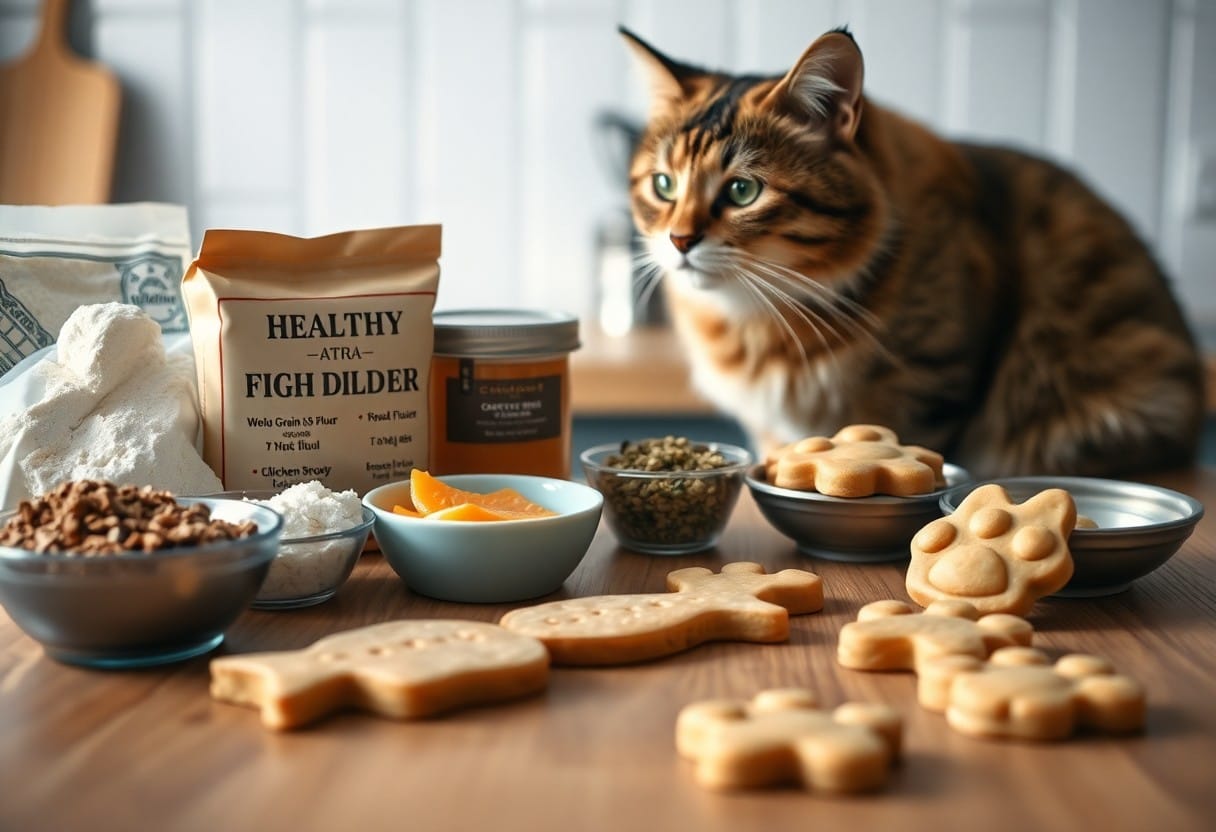
Pros and Cons of Homemade Cat Treats
For those contemplating homemade cat treats, it’s important to weigh the pros and cons to make an informed decision. Below is a breakdown of the positive aspects and potential drawbacks of creating these tasty treats for your feline friend.
| Pros | Cons |
|---|---|
| Control over ingredients | Time-consuming preparation |
| Customizable for dietary needs | Risk of unbalanced nutrition |
| Freshness and quality | Shorter shelf life |
| Cost-effective | Potential for mess in the kitchen |
| Bonding experience | Requires research for recipes |
Benefits for Your Cat
For your cat’s health and happiness, homemade treats can be an excellent option. You gain the ability to choose high-quality ingredients that cater to any specific dietary needs or preferences your feline may have. Additionally, these treats can be free from artificial additives, ensuring that your cat enjoys a wholesome and natural snack.
Potential Drawbacks
On the other hand, there are some potential drawbacks to consider when it comes to homemade cat treats. While you have full control over the ingredients, there is a risk of formulating treats that may not provide balanced nutrition, which is important for your cat’s health.
Plus, creating homemade treats can be time-consuming, and without proper research, you might prepare a treat that lacks important nutrients. Additionally, the preparation can lead to a messy kitchen, which is not ideal for everyone. Lastly, the shorter shelf life of homemade cat treats could result in waste if not consumed promptly. It’s vital to familiarize yourself with recipes and consider your cat’s overall dietary needs before submerging into this endeavor.
Frequently Asked Questions
Despite the growing interest in homemade cat treats, many pet owners still have queries about their preparation and usage. This section addresses common concerns, ensuring you have all the necessary information for creating nutritious and safe treats for your feline friend.
How Often to Give Treats
Asked by many cat owners, the frequency of giving treats can vary based on your cat’s overall diet and health status. It’s best to limit treats to no more than 10% of your cat’s daily calorie intake to maintain a balanced diet and healthy weight.
Suitable Portion Sizes
Questions about portion sizes often arise among those making homemade treats. Providing the right amount is important to ensure your kitty enjoys them without overindulgence.
Plus, while preparing homemade cat treats, be mindful of the portion sizes. A small piece is usually sufficient, as cats have smaller stomachs compared to humans. Aim for treats that are about one inch in size and adjust based on your cat’s weight and dietary needs. Overfeeding can lead to obesity and other health issues, so it’s important to balance treats with their main diet. Always consult your veterinarian if unsure about appropriate portion sizes.
To wrap up
Considering all points, making healthy homemade cat treats can be a rewarding experience for both you and your feline friend. With a variety of recipes and ingredient options at your disposal, you can tailor treats to meet your cat’s specific dietary needs and preferences. By using fresh, wholesome ingredients, you enhance your pet’s well-being while also enjoying the satisfaction of knowing exactly what goes into their snacks. Now that you have the knowledge, it’s time to start experimenting and treat your cat to some nutritious delights straight from your kitchen!
FAQ
Q: What ingredients are safe to use when making homemade cat treats?
A: When preparing homemade cat treats, it’s important to use ingredients that are safe and beneficial for your cat. Good options include cooked chicken, turkey, or fish as protein sources; pumpkin puree for fiber; and oats or whole wheat flour as binders. You can also add catnip or small amounts of eggs for additional nutrition. Always avoid toxic foods such as onions, chocolate, garlic, and grapes, and check with your veterinarian if you’re unsure about any ingredient.
Q: How can I ensure my cat enjoys the treats I make?
A: To increase the likelihood that your cat will enjoy the homemade treats, consider their preferences. Observe which flavors and textures they like best. You can experiment with different combinations of protein sources and flavors while keeping it simple. Treats made with meat and aromatic ingredients tend to be more appealing. You might also try shaping the treats into fun forms or using a sprinkle of catnip to entice your kitty. Testing out small batches can help you refine the recipe to their liking.
Q: How should I store homemade cat treats for freshness?
A: Storing homemade cat treats properly is key to maintaining their freshness and safety. After baking, allow the treats to cool completely. Place them in an airtight container to prevent moisture from spoiling them. For longer storage, you can refrigerate the treats for up to a week, or freeze them for several months. If you freeze them, consider portioning them out so you can easily thaw what you need without exposing the entire batch to air and moisture.
